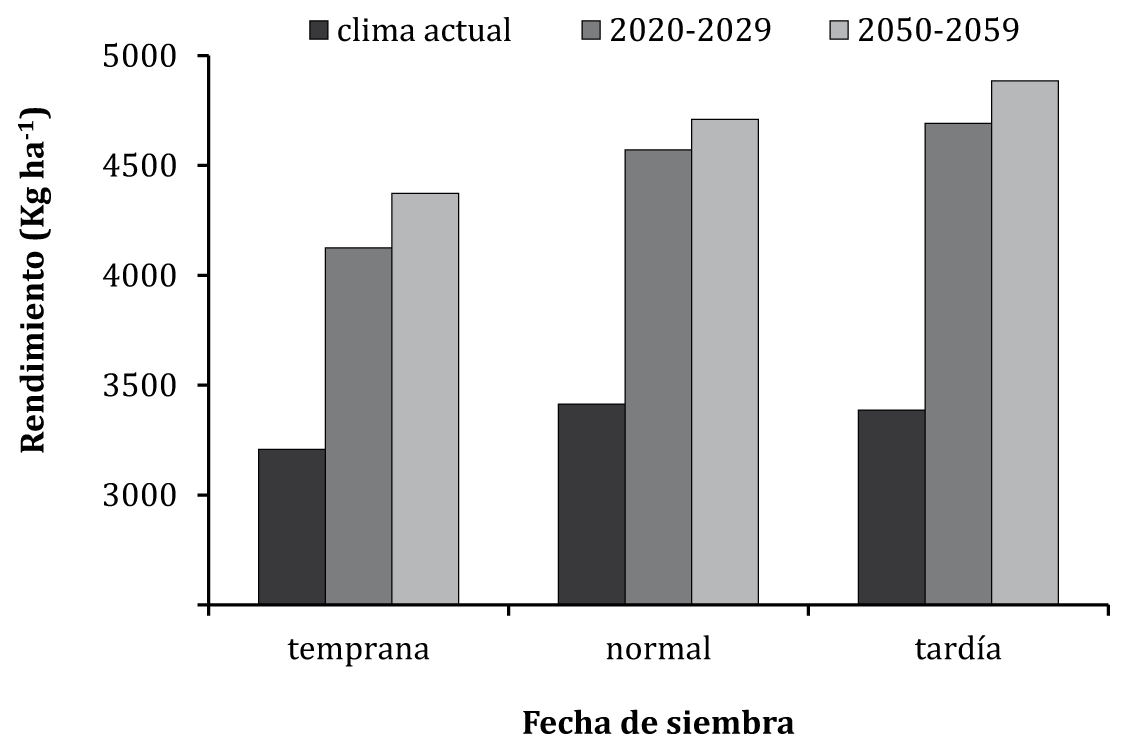Parameterization of CROPGRO-soybean model and its use as a tool to assess the impact of climate change on the soybean crop
Keywords:
climate change, crop model, yield, soybeanAbstract
Prior to their use in decision-making, crop models need to be calibrated with field data from the region where the model will be used. The objectives of this research were calibrate and validate the predictive ability of CROPGRO-soybean model. Data from two cultivars maturity group IV (Asgrow 4656 and Don Mario DM4700) and three years of field experiments in conditions not limiting in Azul, Buenos Aires, Argentina were used. Calibration started with the coefficients of group IV that by default are in files: species, ecotype and cultivate. With the original species file, dry matter, increasing the number of pods and growth were underestimated. Minor changes in file were made to adjust phenology and growth dynamics for both cultivars. The cardinal base temperatures for photosynthesis and pod formation were reduced; with these modifications good predictions for growth and yield were obtained. With the CROPGRO-soybean calibrated and using projections for the region from PRECIS regional climate model under the SRESA2 scenario in the years 2030 and 2060, the effects of global climate change in future soybean crop yield were evaluated. Under these scenarios and rainfed conditions, are anticipated yield increases of 34 and 38% for each of the years studied with a slight improvement delaying the planting date, respect to current optimum date.

Downloads
Published
Issue
Section
License
Aquellos autores/as que tengan publicaciones con esta revista, aceptan las Políticas Editoriales.


